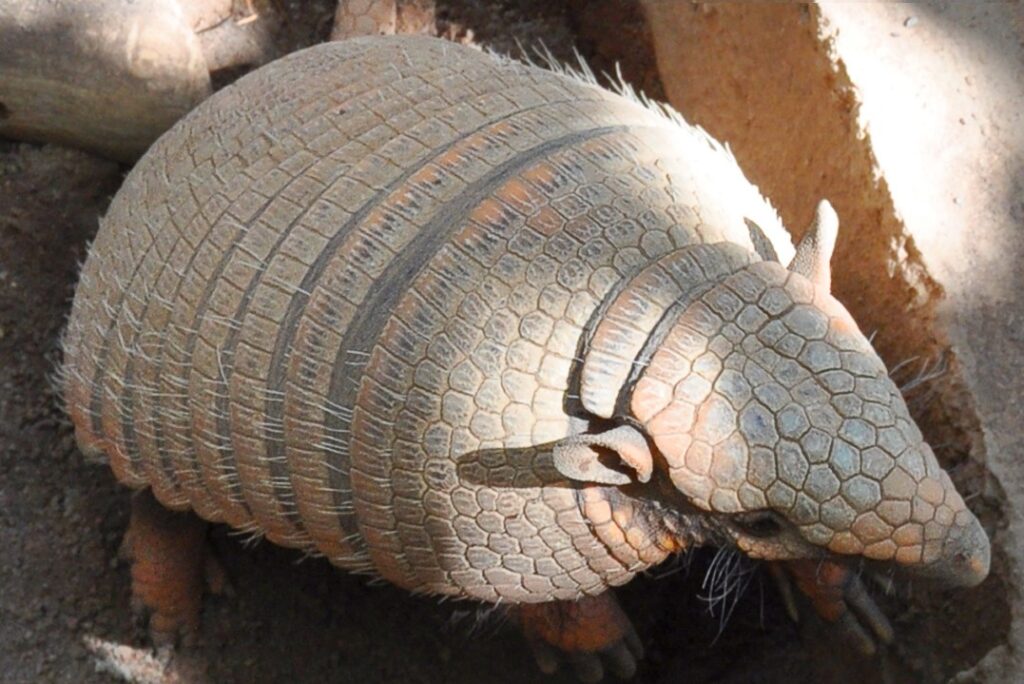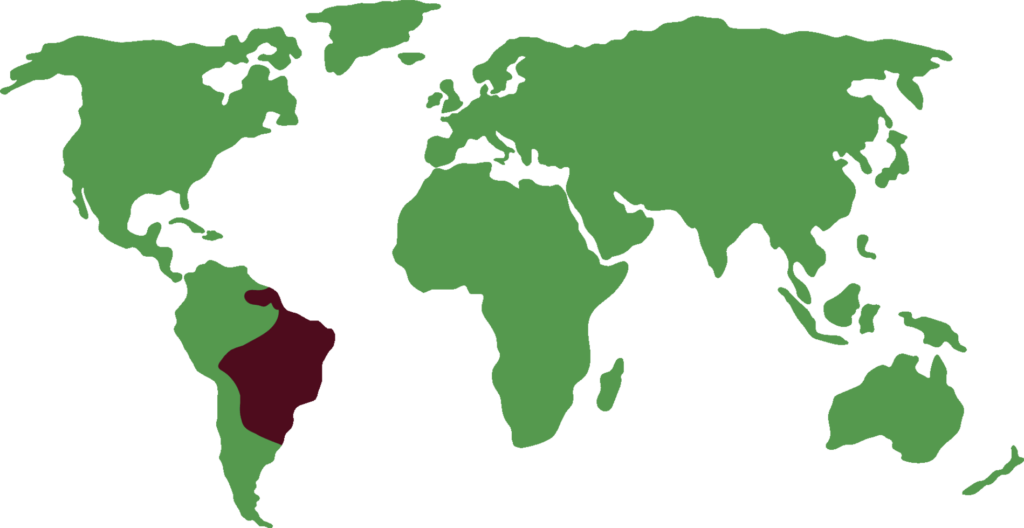SIX-BANDED ARMADILLO
Euphractus sexcinctus

LENGTH

60 cm
WEIGHT

5 kg
LIFESPAN

15 years
It is one of the largest species of armadillo and is of great importance in South American ecosystems, as it helps to control the populations of insects and other invertebrates.
General characteristics
The head of the six-banded armadillo is flat and pointed, with rounded ears and small eyes. Its body consists of a rigid carapace, formed by bony plates called osteoderms.
The carapace is dark brown or black with a pattern of white or yellow stripes and is divided into six movable bands that allow the armadillo to curl into a ball when it feels threatened. It is sparsely covered with beige or white bristle hairs.
Each of its four short but strong legs has five toes that are equipped with well-developed claws that allow it to dig for food and make burrows.
The armadillo’s tail is long, measuring up to 20 cm, and is used to mark territories with the characteristic odor it gives off through scent glands located at the base of the tail.
Feeding
It feeds on both plant and animal material including insects, small mammals, birds, reptiles, amphibians, eggs and fruits.
Behaviour
The six-banded armadillos are solitary and territorial animals. They moves mainly at night and is active during the early morning and late afternoon. During the day, they tend to stay in their burrows to avoid heat and predators. Although mainly solitary, they sometimes gather to mate or share burrows.
They are quick on the ground, using their front legs to dig and their hind legs to jump and run.
Although armadillos are generally shy and choose to escape from predators, they are able to defend themselves with their claws if they are in danger and emit a range of sounds such as grunts, snaps and whistles.
In addition to sounds, they mainly use their sense of smell to communicate, leaving scent marks in their territory and using their sense of smell to detect the presence of other individuals or territories.
Reproduction
Six-banded armadillos have a relatively low reproductive rate compared to other animals of their size and usually have one or two litters per year.
Mating season varies according to geographic location and food availability, but in general they can breed throughout the year. They form temporary breeding pairs and males usually accompany females for a short period of time before separating.
After the gestation period, which lasts about 60 days, a litter of up to 6 offsprings are born with their eyes closed. The newborns have a soft shell and no hair. They will remain in the burrows under the mother’s care until they are able to fend for themselves.
Threats
Armadillo´s habitat is being compromised due to the expansion of agriculture and urbanisation. In certain regions there are commercial hunts of these animals for their meat and shells, which are used for medicinal and handicraft purposes.
Distribution
It is found in South America, specifically in regions ranging from eastern Bolivia and southern Brazil to Paraguay, Uruguay and Argentina.
It lives in diverse habitats, including dry forests, humid forests, savannahs and grasslands, although sandy and loose soils are its favourite.

Did you know?
Six-banded armadillos are good swimmers and are able to float because they store air in their bodies.
They can close their ears and nostrils when digging in the ground to not inhale dust or soil.
They are able to regenerate their tail and part of their shell if they become damaged.
Conservation status
